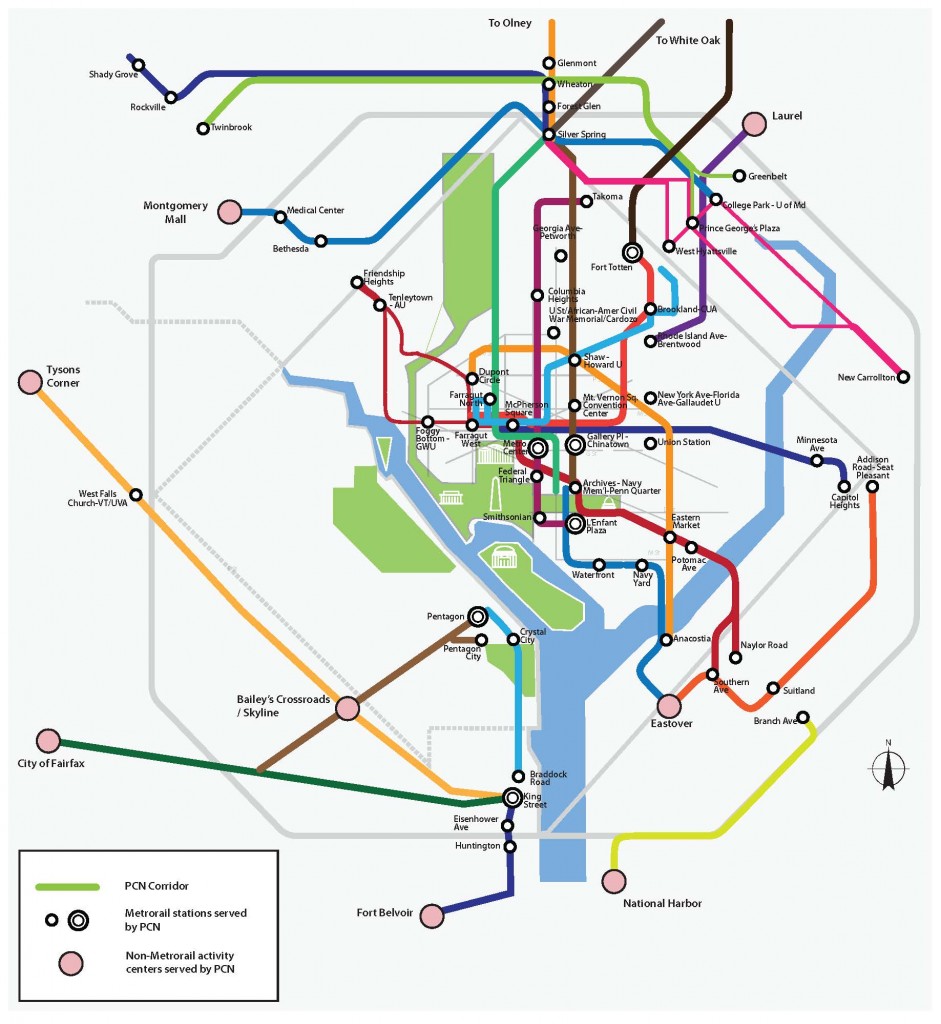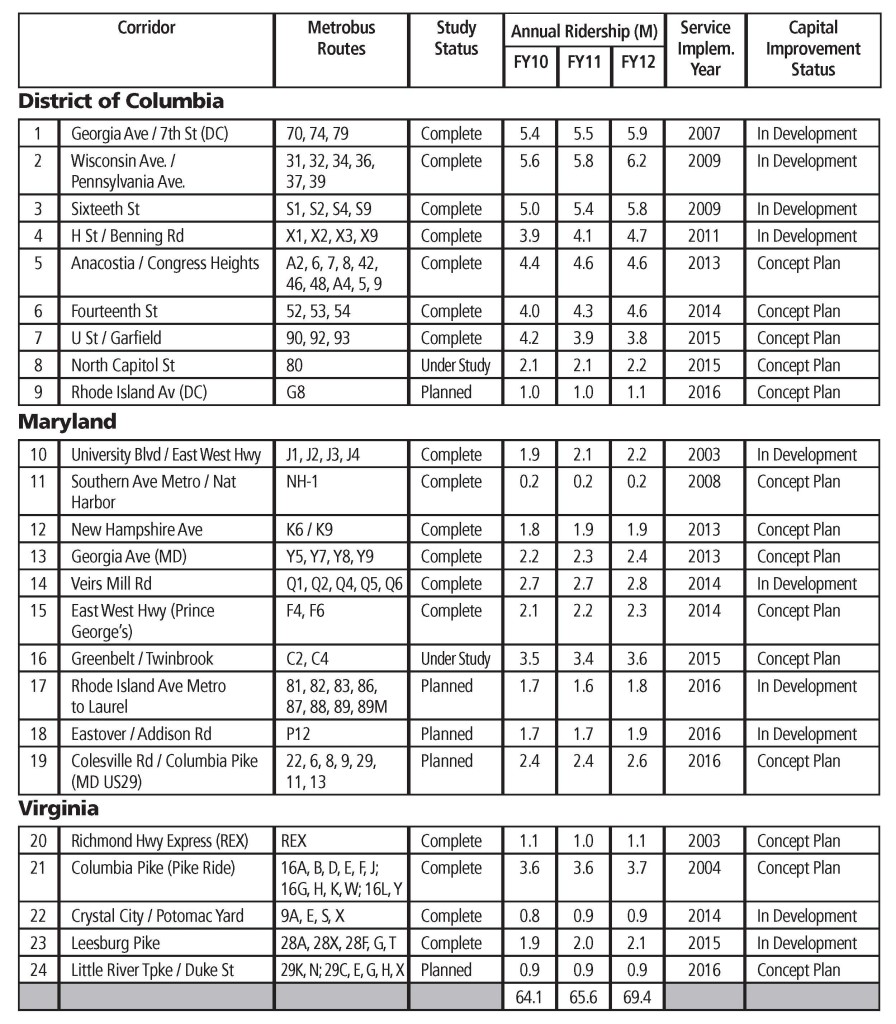Metrobus Priority Corridor Network (PCN)
Metrobus’ Priority Corridor Network (PCN) Plan will improve bus service, travel speeds, and reliability on 24 regional corridors, which serve half of Metrobus ridership. Improvements include:
- Improved operational strategies such as transit signal priority and exclusive bus lanes
- Increased frequency and span of service
- Improved customer information
- Added MetroExtra, Metro’s limited-stop bus service, routes and buses
- Expanded fare payment options
- Added safety, security and incident response measures
- Enhanced bus stops and facilities
Purpose and Need
The Metrobus system carries about 440,000 riders each day with more than half on PCN. Buses are frequently caught in heavy street traffic, increasing travel times, degrading reliability, and increasing operating costs just to maintain service levels. Ridership on PCN corridors has increased by eight percent since 2010, straining already-crowded buses on congested streets. A 2009 Metro study found eight frequent service corridors with average afternoon rush hour bus speeds below five miles per hour, a brisk walking pace. Metro will need to add buses to reduce customer wait times and crowding, however Metro’s fleet and bus garage capacity is constrained in locations with the highest demand.
Benefits
- Adds over 100,000 new daily boardings to the regional bus network
- Saves each passenger an average of 3-4 minutes per trip
- Reduces transit travel times in key corridors by up to 50 percent
- Triples the number of households and more than doubles the number of jobs within a half-mile of a MetroExtra bus stop
- Provides Metrorail line and core system capacity relief and redundancy during rail system disruptions
Considerations
- While Metro operates bus service, local and state jurisdictions own the roadways on which many of the improvements are planned.
- Reserving street space exclusively for buses is often met with firm community resistance. Without a strong local partner, the majority of the benefits of PCN will not be realized.
- The region’s 2010 Priority Bus TIGER Grant award provided funding for some transit signal priority, queue jumps and bus lanes projects, but much more progress is needed to achieve the full benefits of the PCN.
- Cost effective operation of the PCN fleet will require expanded garage space to house and maintain new buses. Locations of available or readily-expandable garage space, PCN bus lines and fleet needs for larger or alternative-fuel buses often are not closely aligned, hindering implementation.
- Costs for garage space needed to house and maintain the estimated 172 new PCN buses needed to support the full PCN plan are included in another element of Metro 2025.
- The proposed service improvements alone do provide measurable and meaningful benefits, but their full benefit is not realized until the infrastructure improvements are made.
Status of Ongoing Projects
- Metrobus PCN Plan, approved by the Metro Board of Directors (2008)
- Washington Region Priority Bus TIGER Grant award ($58.8M) (2010)
- PCN Evaluation Study (2010)
- Metrobus Fleet Plan (2010, 2013)
- 17 of the 24 PCN corridor studies have been completed, with 8 corridor service recommendations implemented and 9 partially implemented
FY2014-2019 Investments
These investments are already included and funded in Metro’s current six-year CIP:
- Purchasing 100 expansion buses
- Adding bus garage capacity
- Implementing improvements on additional corridors
- Evaluating additional corridors for improvements
Total – $85 million
Note: these planned investments are also enumerated in the Bus Fleet Expansion description
Order of Magnitude Cost Estimate
$600 million ($2012)
- $120 million: buses ($720K per bus)
- $120 million: systems including transit signal priority and passenger information
- $150 million: facilities, including stations, and park and ride lots
- $210 million: facilities by jurisdictions including exclusive bus lanes and other running way improvements
Timeline
For more information:
Download both the full Momentum plan and the Executive Summary.
Regional support is important to making Momentum a reality! A number of regional stakeholders have already endorsed Momentum. Please sign on and add your name to endorse Momentum and send the message that public transit is vital to the National Capital Region.





2021? Oh my.